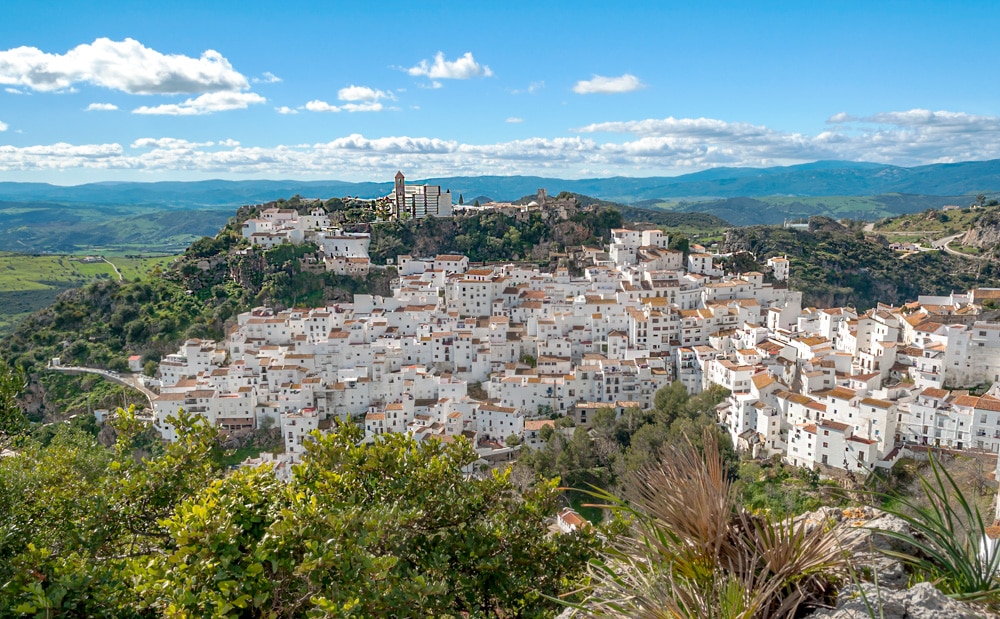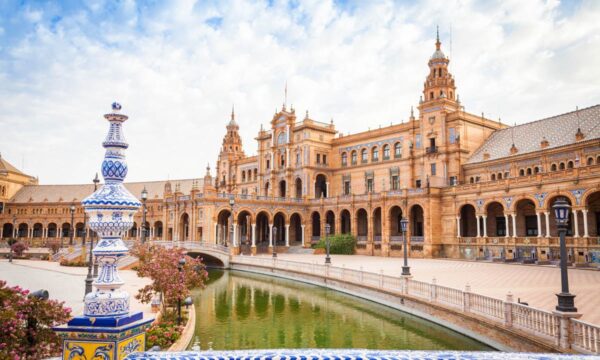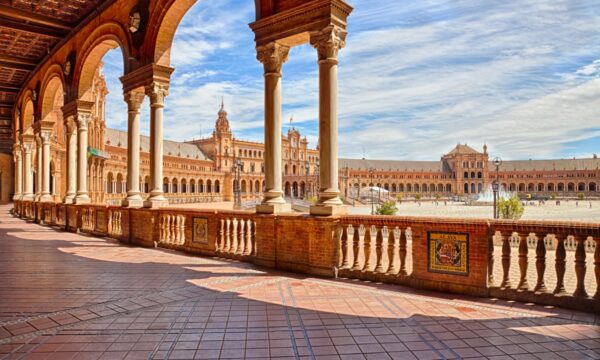Considering a visit to Casares, Spain? The little village is one of the most photo-worthy spots in Andalucia, Spain’s southern province.
Think of pristine white sugar cubes piled high on top of each other just so, perfectly topped by the ruins of an old castle and church: that’s Casares!
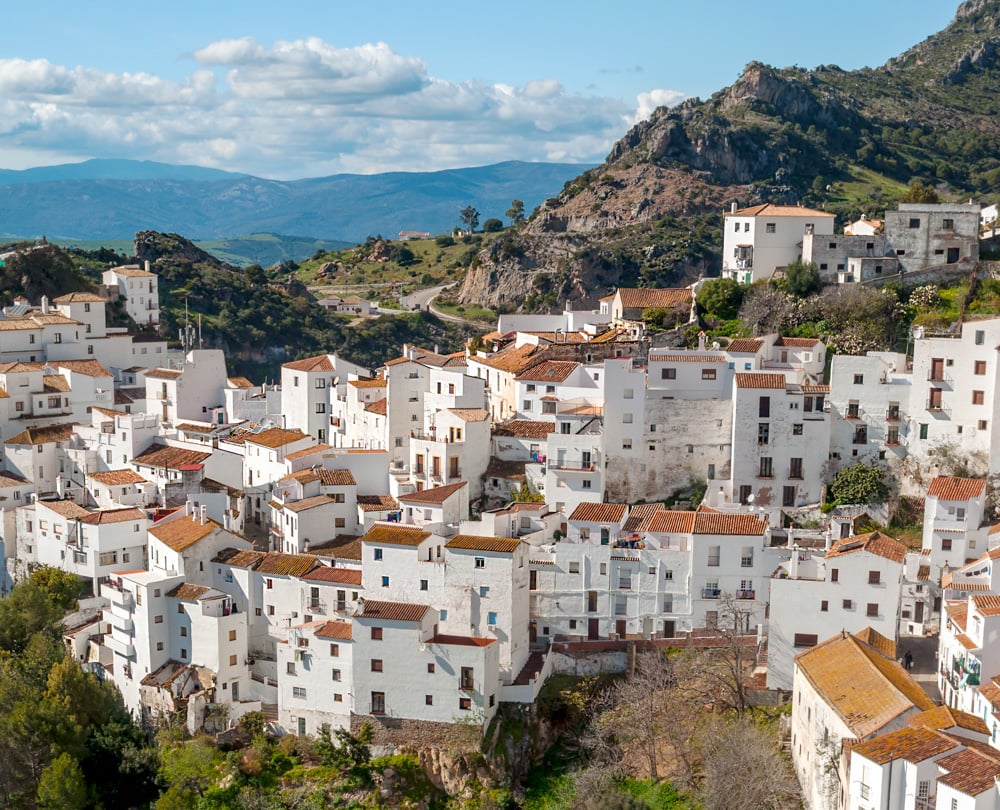
Some links on this page may be affiliate links. If you click an affiliate link and make a purchase, we may receive a small commission, at no extra cost to you. For more details, refer to our disclosure.
Among the most picturesque white villages in Spain, Casares is most worth visiting for the spectacular views from the hilltop castle grounds, and the laid-back ambience of a small mountain village.
It is small enough that you can explore it in one day, or even a few hours.
Casares is easy to access from cities along the Costa del Sol, and in fact it’s one of the best day trips from Malaga you can do. This little village is one of our favorite day trips in the region!
If you are planning a Costa del Sol road trip in southern Spain, Casares makes a great stop: it’s not too far inland.
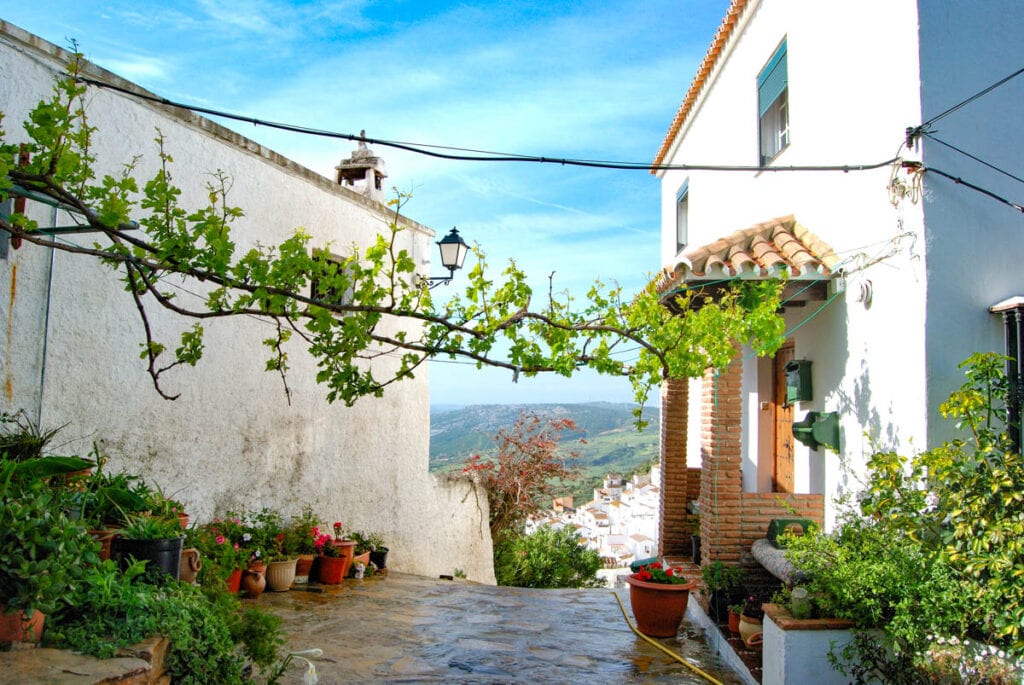
And Casares is not yet part of the coach tour circuit, so it’s not as crowded as some of the other white villages in the region.
Read on to discover the best things to do in Casares, plus our guide to visiting this picture-postcard destination!
VISITING CASARES, SPAIN
History of Casares
Best Things to Do in Casares
Getting to Casares, Spain
Where to Stay in Casares
Where to Eat in Casares
The Best Time to Visit Casares
A Brief History of Casares
Casares is not just picturesque, it also has a rich history.
In Roman times, Julius Caesar is reported to have been cured of a longstanding affliction due to the sulfurous waters of a local spring (on the road to Manilva).
As a result, Casares was allowed to mint its own coins during the time of the Romans. Caesar also reportedly built a villa in the area.
Later the Moors controlled the area, and built the castle at the top of the hill.
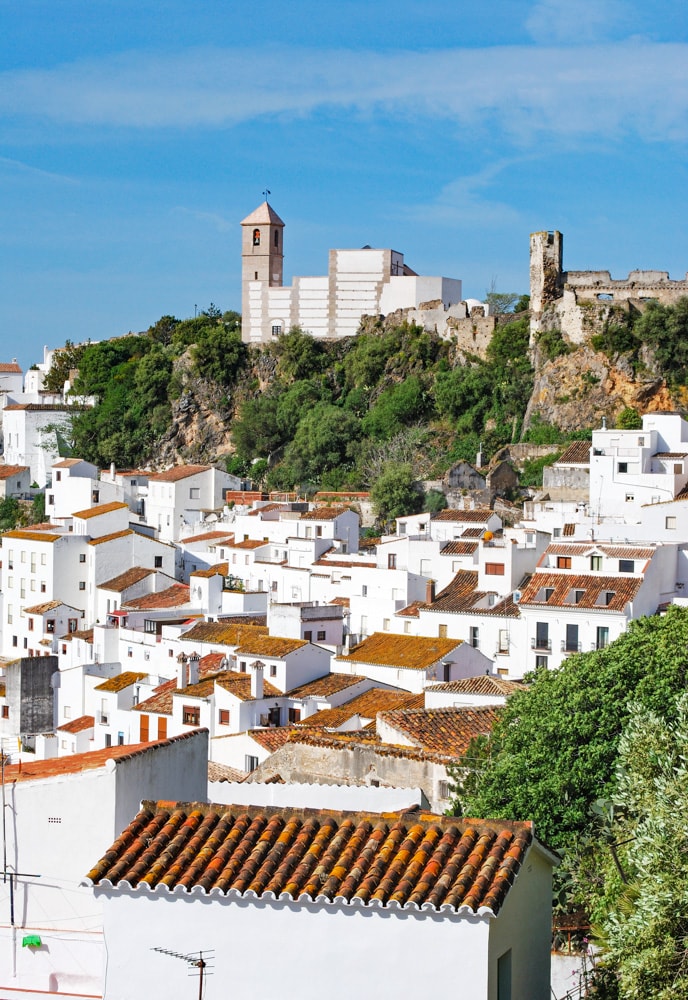
After Ronda fell to the Christians, Casares surrendered and came under the Duke of Cadiz, Rodrigo Ponce de León.
Still later, it was in Casares that the Duke of Arcos accepted the surrender of the rebel Moriscos.
In more recent times, Casares is known for being the birthplace of Blas Infante, a politician and writer considered the father of Andalusian nationalism.
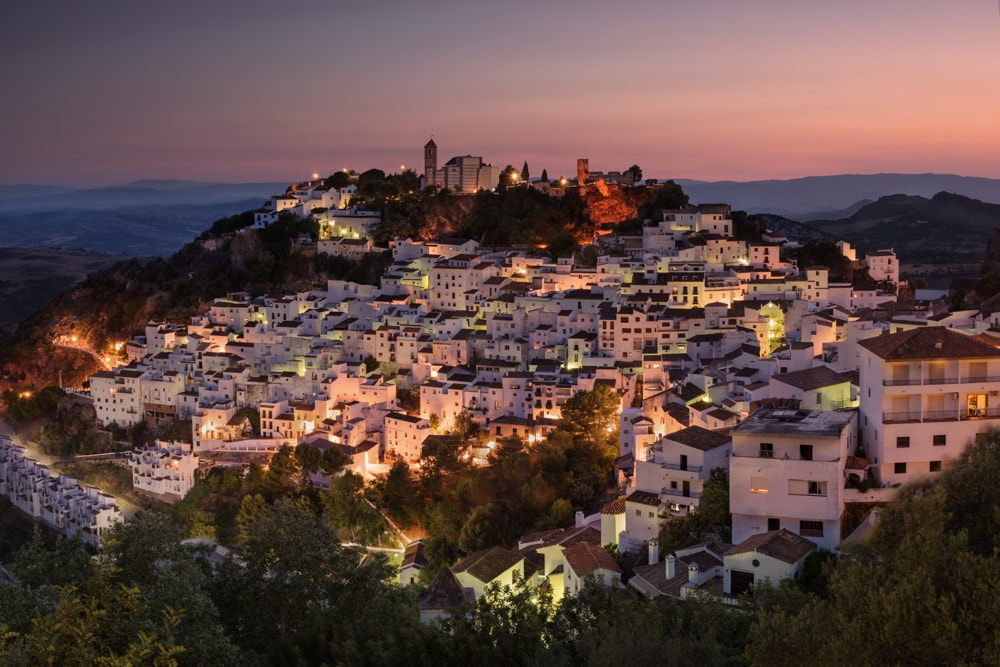
Things to Do in Casares, Spain
1. Snap a Photo of the Vilage of casares as You Approach
You’ll be taking out your smartphone or camera as soon as you get your first look at Casares.
The drive to the village from the coast is scenic, and as you approach, you’ll see the sugar-cubes of Casares gleaming in the sun, making that perfect picture.
You’ll get the best photos with afternoon sun, but the village looks enchanting no matter the time of day!
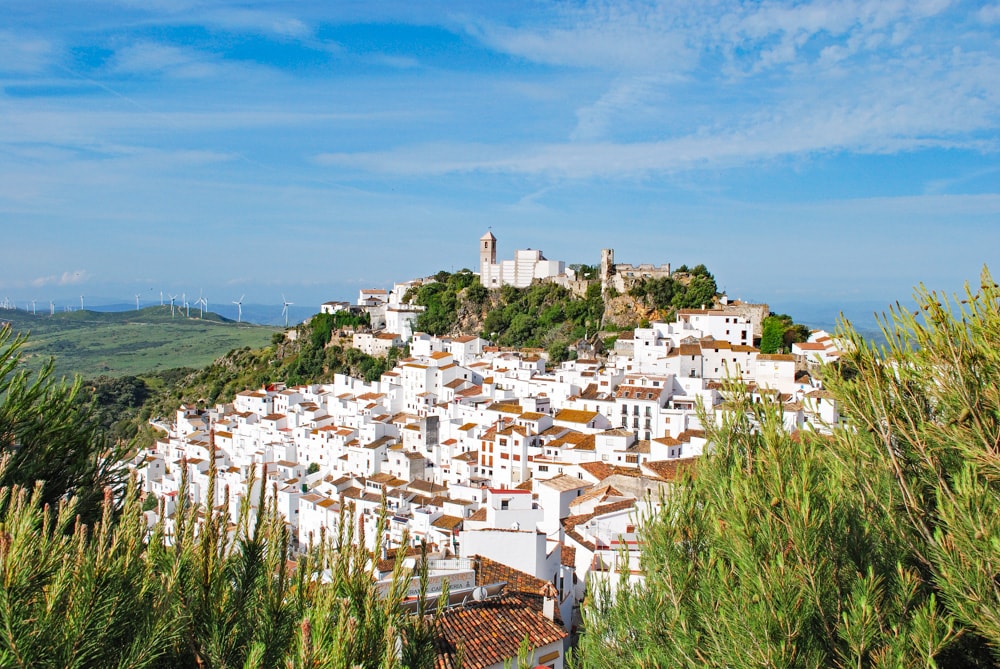
2. Stroll the Plaza de España
The main square in Casares is an excellent place to begin your exploration of the village.
Here you will find the statue of Blas Infante, the Andalucia nationalist leader. He was executed by Franco’s forces at the start of the Spanish Civil War.
Also admire the neoclassical Fountain of Carlos III in the center of the square: it has served as the source for fresh water for Casares since the late 18th century.
There are cafes with terraces here if you want to stop for a drink before you explore more.
3. Check Out the Birthplace of Blas Infante
Just a short walk from the main plaza, you will find the birthplace of Blas Infante on Calle Carrera.
The Casa Natal is now a little museum worth a browse. It showcases events in the life of the Andalusian political leader, and his works.
Blas Infante Pérez de Vargas, to give him his full name, was also a writer, historian, and music scholar.
The museum is closed Sundays.
4. Have a Drink at a Cafe
The central plaza in Casares is lined with a few cafes, and it is a great place to relax at an outside table with a drink.
We did this after we were done exploring the village: it was a good break after the uphill walk!
Try Antiguo Bar Nuevo: the terrace offers great people watching with your drink!
5. Visit the Ermita de San Sebastian
The Ermita de San Sebastian, located by the main square, dates from the 17th century.
It is also known as La Iglesia de Nuestra Señora del Rosario del Campo. She is the patron saint of Casares.
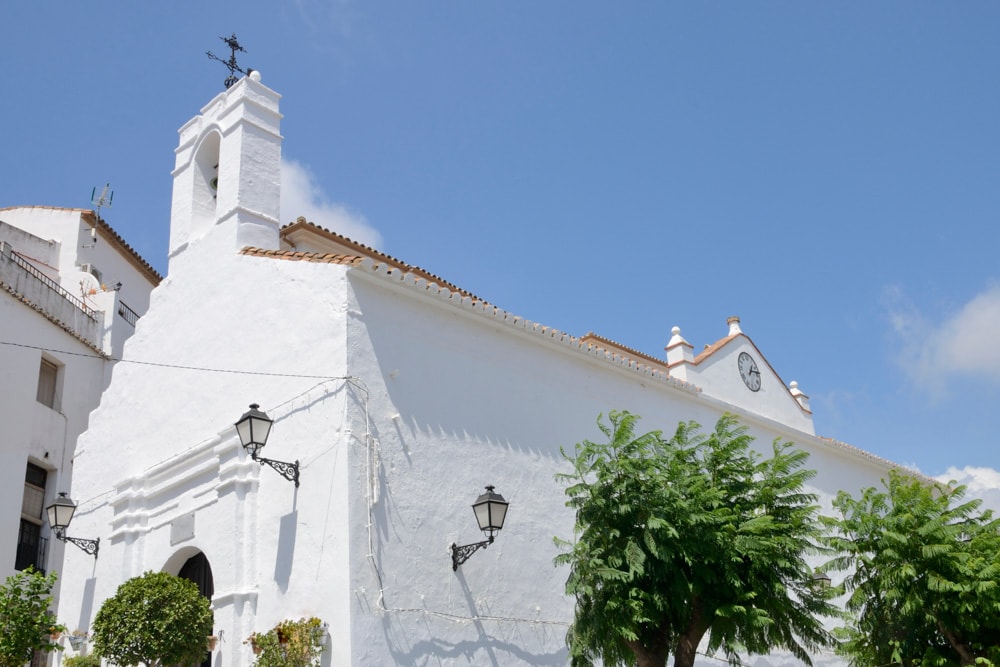
It’s a charming little church, with a single nave, and a bell tower.
Admire the facade, then step inside if it’s open, to view the serene interior and savor the silence.
6. Walk to the Ruins of the Old Castle
The ruins of the old castle at the top of the hill are a must-visit.
If you keep walking up Calle Villa from the main square, and you’ll come to an arched passageway (The Villa Arch) that you can walk through to the ruins.
Or you can take Calle Arrebal through the picturesque old Arrebal Arch to the castle.
Not much remains of the old castle, but you can still see some parts of the old fortifications, including a part of the walls.
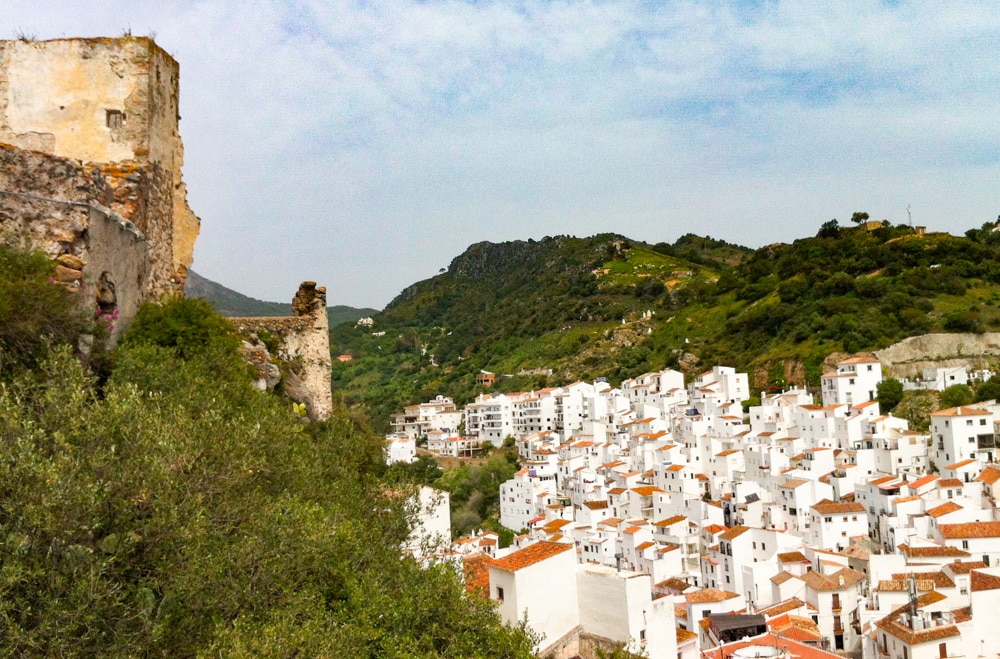
7. Admire the Arco del Arrabal on the Way
The old Moorish Castle had two entrances, and one is through the picturesque Arco del Arrabal, a stone archway that still survives.
The arch comes up on the route to the castle, so it’s a quick stop to admire the work and snap a few photos.
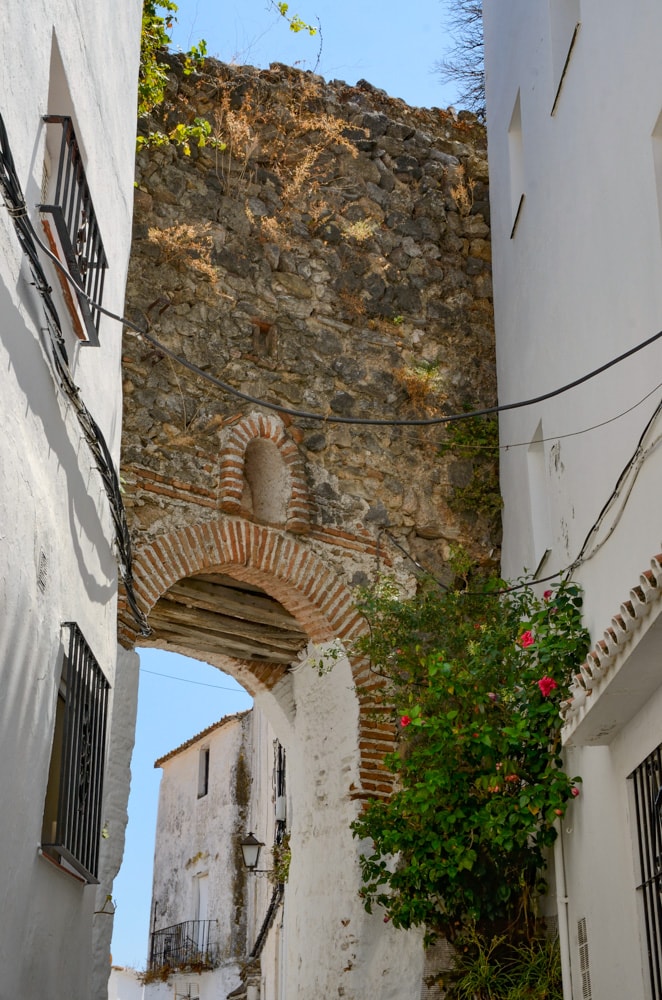
8. Photograph the Church of La Encarnacion
At the top, you’ll also find the former Iglesia de la Encarnación.
The church was built in the very early 16th century, over the mosque that stood at the site. Its bell tower used to be the minaret of the mosque.
Damaged during the Spanish Civil War, the structure now houses the Centro Cultural Blas Infante, a small museum.
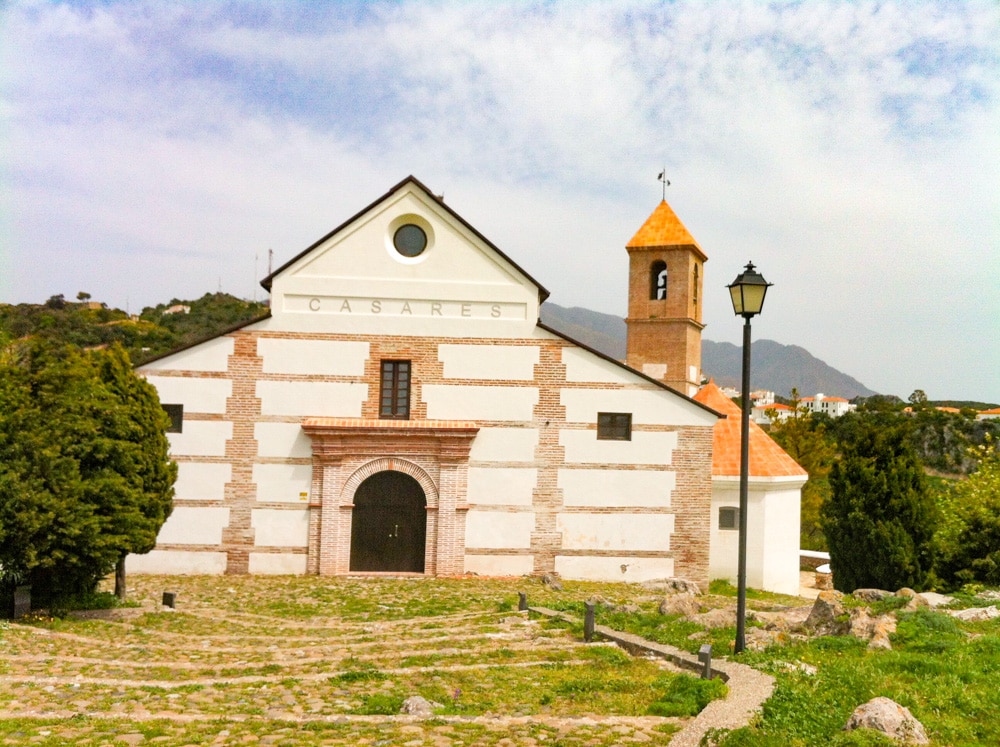
9. Admire the Ermita de la Vera Cruz
Also in the complex at the hilltop is the small hermitage of Vera Cruz, built from the ruins of the Moorish castle.
Originally built in the early 19th century, the hermitage, with its beautiful arched entrance and small white dome, has been restored.
You can’t go inside, but you can view the interior from beyond the railings.
10. Take in the Magnificent Views from the Castle Grounds
While the ruins and the church are interesting, the main reason for the trek to the top is to take in the jaw-dropping views. Taking in these awe-inspiring views are one of the best things to do in Casares!
From the viewpoint at the back of the church, called the Mirador del Tajo de la Planá, you get expansive views of the surrounding countryside.
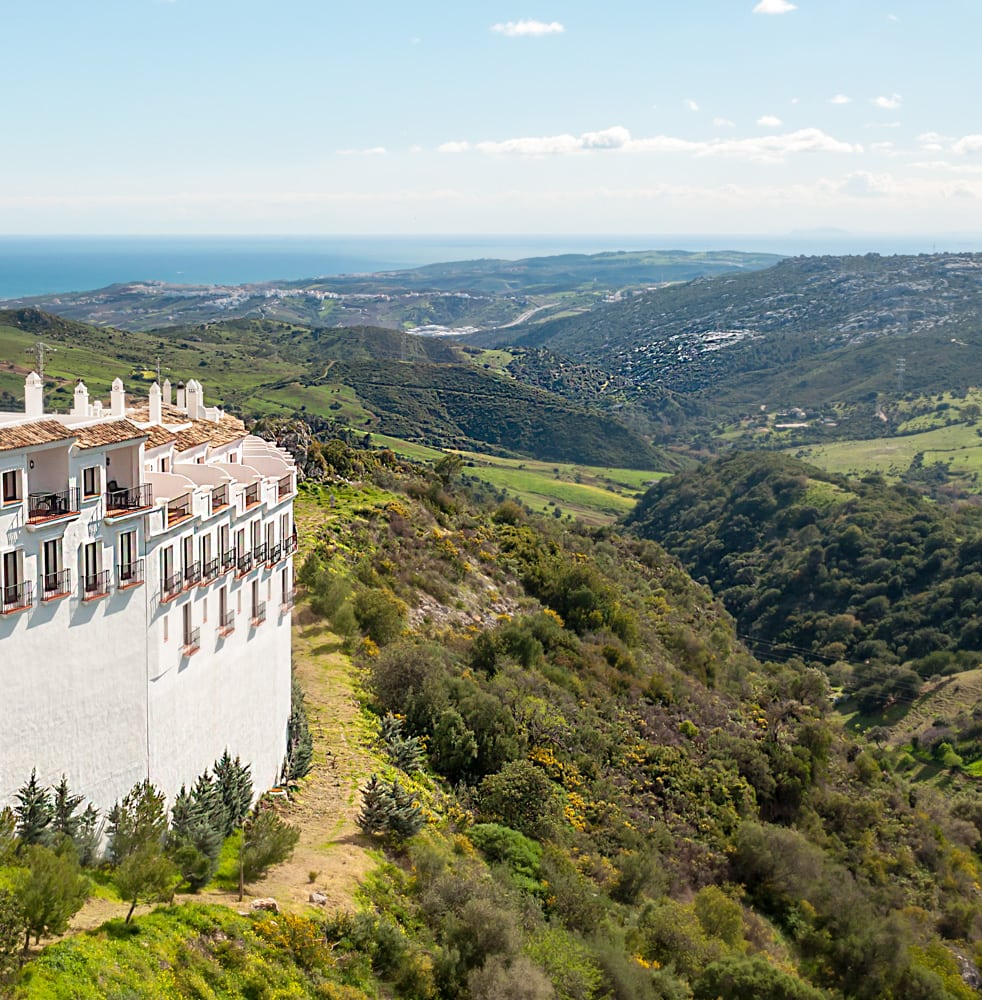
On a clear day, you can see all the way to the Rock of Gibraltar and the African coast.
There are also stunning views of the rooftops of Casares.
You will want to take lots of photos, so allow for enough time at the top!
11. Look for Birds
The top of the hill in Casares is a great place for birdwatching, so bring your binoculars if you enjoy birding.
Look for birds of prey: peregrine falcons, kestrels, and Griffon vultures are spotted here.
The magnificent Griffon vultures make a splendid sight as they glide in the air above the village.

12. Stroll the Casares Cemetery
Also at the top of the hill you will find the cemetery. Given the rocky clifftop setting, the graves are above ground and placed close to one another.
Well-tended and still in use, it’s a small but old and beautiful cemetery, worth visiting if it’s open.
The views from the far end of the cemetery are breathtaking.
13. Wander the Narrow Streets and Alleys of Casares
On your way back down from the hilltop, take the time to wander the pretty alleyways of Casares.
The streets are narrow and some of them are steep, but it’s a picturesque wander, with the white facades and colorful flower pots.
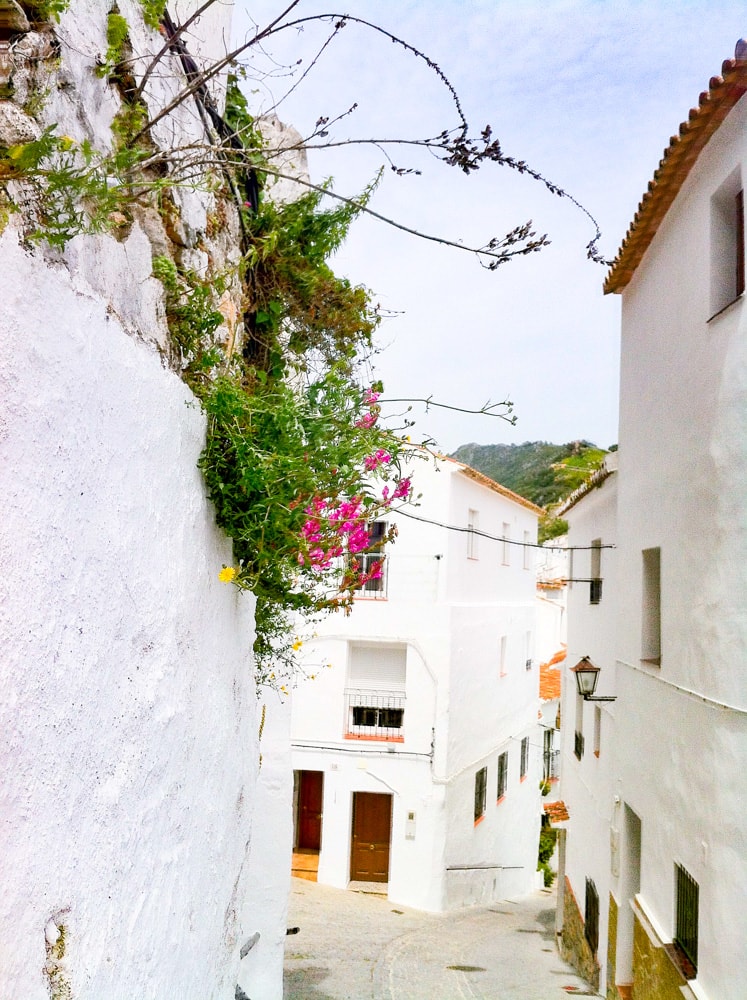
14. Stop at the Mirador de Casares
If you arrived by car, and didn’t get great photos of Casares on the way in, you’ll want to drive to the Mirador de Casares, marked by a simple cross. See map.
This viewpoint offers spectacular views of the entire village, plus the hilltop church and castle.
There is parking, so you can stop and take photos of the entire village and its backdrop at leisure!
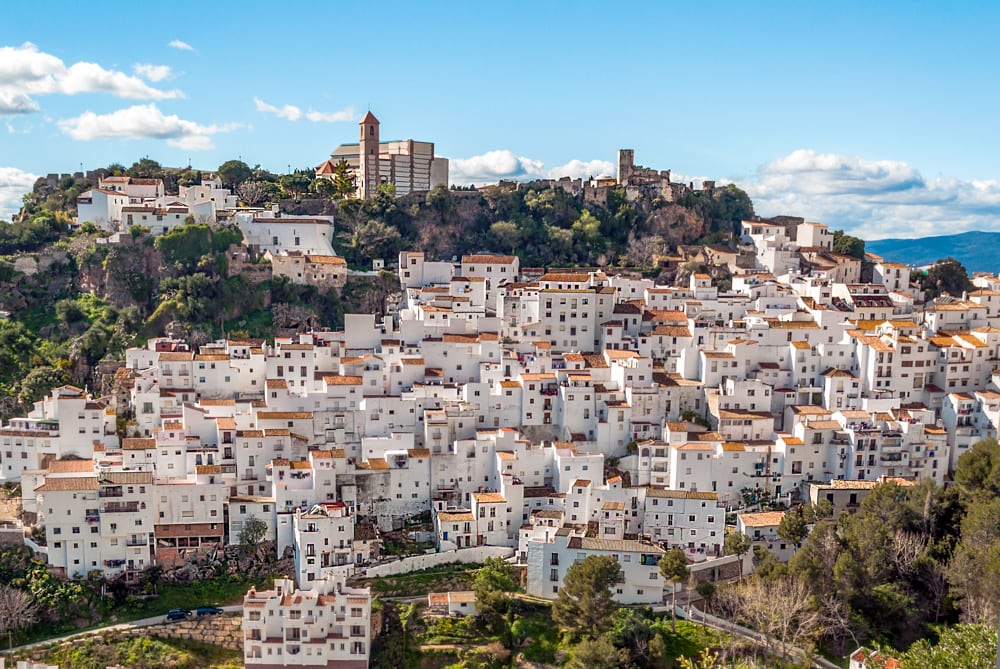
Getting to Casares, Spain
Rent a Car and Drive
Renting a car and driving to Casares is not only the most convenient option for getting to the village, it also offers more flexibility.
Arriving by car means that you can take the drive as slow as you want, because the route is scenic and you’ll want to stop along the way.
For the best approach driving from the coast along the A7, take MA8300 inland near Torre de la Sal. See map.
You’ll go past Venta Garcia on your way to Casares: it’s a nice place to eat if you pass it at meal time. There’s outside seating and a bar.
If you are looking to rent a car for your Spain trip, consider Discover Cars! They scour multiple providers to get the best price for you, including brands like Hertz, Enterprise, Alamo, Budget, and Sixt.
Parking
The streets of Casares are super narrow, so it’s best to park outside the village and walk. You’ll find free parking on the road leading into the village (MA8300).
From here, you’ll walk down one of the steep paths leading down to the main square in Casares.
You can also take the road further around the edge of the village to the welcome center and car park.
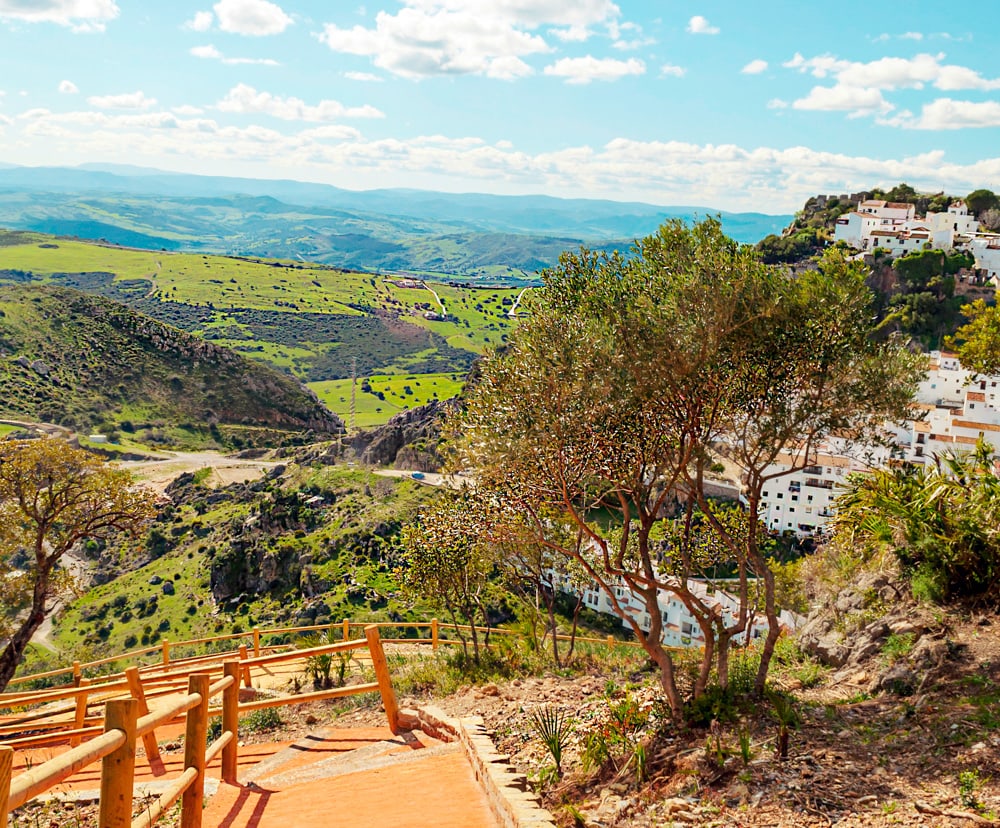
Take the Bus
Want to visit Casares by public transport? It’s doable: we visited by bus the first time we did a day trip to Casares from Malaga.
You’ll only get about three hours to explore Casares, but if it is your only option, it is better than not visiting at all!
First take a bus from your starting point to the town of Estepona. Estepona is along the main coastal route, so you should be able to get a bus from any place along the Costa del Sol.
If you are visiting from Malaga, the bus journey to Estepona takes about 90 minutes each way.
From Estepona, you have to take the local bus L-77 to Casares. The journey from Estepona to Casares takes about 40 minutes.
Here’s the catch: there is only one bus in and out of Casares each day that works for a day trip, so if you plan to visit just for the day, be careful not to miss the bus back to Estepona!
At the time of writing, the bus leaves Estepona at noon and leaves Casares at 4 p.m.
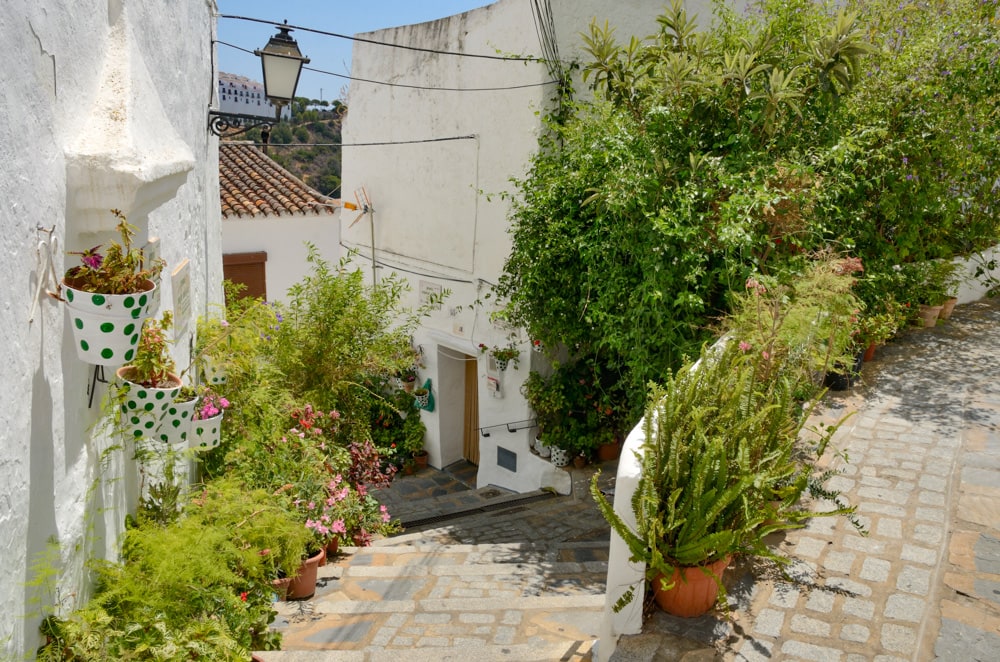
Bus + Taxi
For a more flexible but more expensive option, arrive by bus to Estepona and take a taxi from Estepona to Casares.
Private Tour
The most expensive option, but one that allows for the greatest flexibility without driving, is to book a private car and driver.
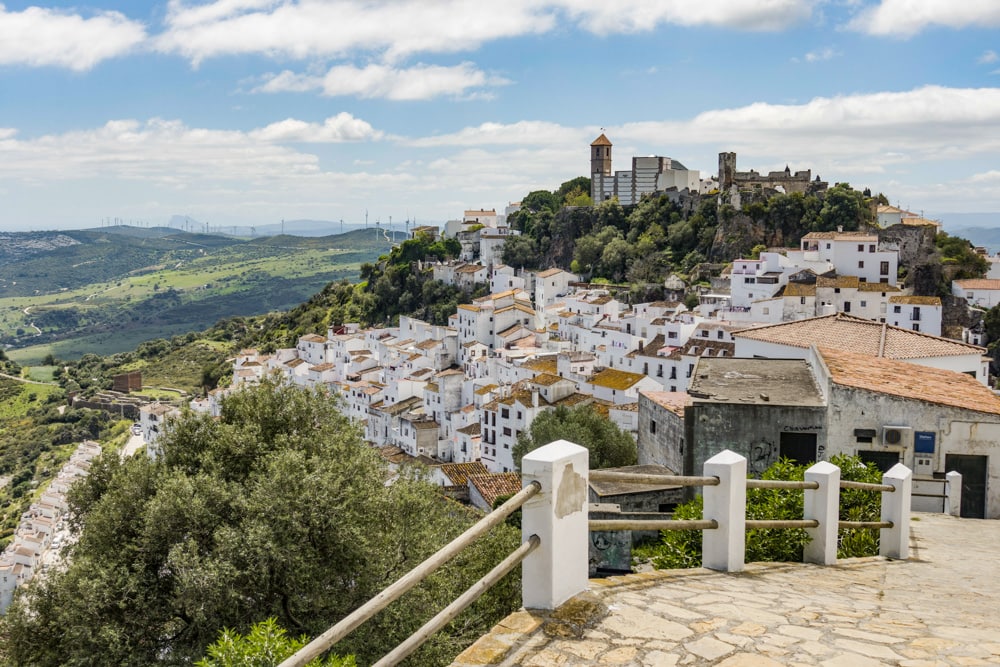
Where to Stay in Casares
If you plan to spend the night, or a few days, in Casares, consider Casares Village Bed and Breakfast!
The property features a swimming pool and a shared lounge and garden. Wifi is free. Some rooms are air-conditioned and some have a patio or balcony, and a sitting area.
La Casita del Arrabal is an apartment with two bedrooms and one bathroom. There is a fully equipped kitchen.
The well-appointed unit features a terrace and a balcony with city views.
Where to Eat in Casares
On the main square, Antiguo Bar Nuevo is a good option for lunch or dinner. Portion sizes are generous and they serve drinks as well. Prices are reasonable.
Sarmiento Brasa Andaluza is a great choice if you have a car, since it’s located on the road leading to the village. It’s more expensive, but the food, and the views, are worth the money!
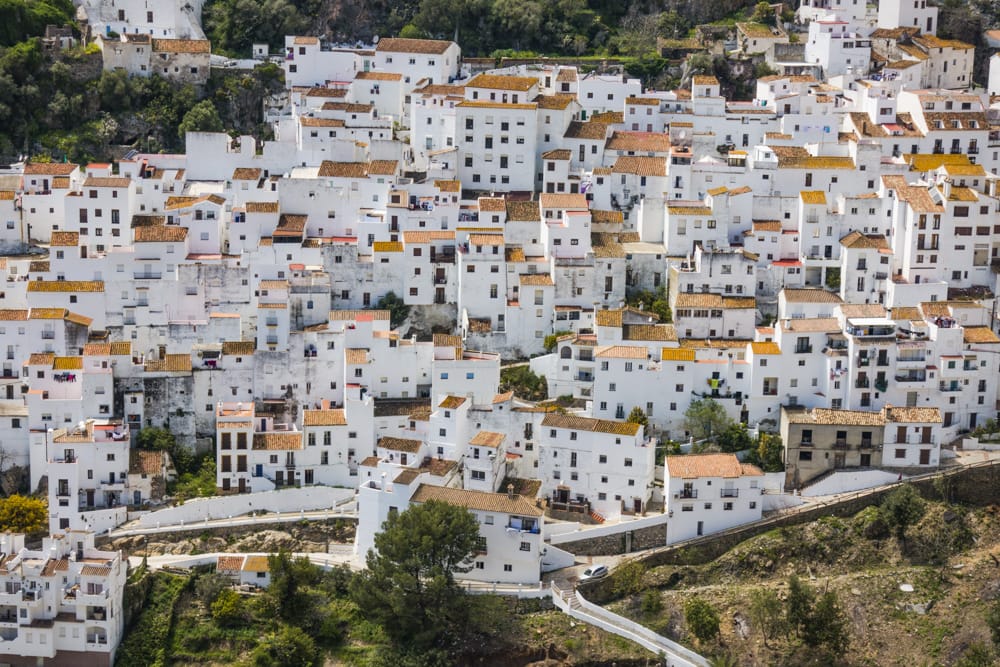
The Best Time to Visit Casares, Spain
For ideal daytime temperatures for exploring, coupled with dry days, plan on visiting in late spring or early fall.
Summer brings warmer temperatures but the least likelihood of rain and the longest daylight hours for exploring.
If you plan to visit just for the day, pick a bright clear day, since the views are one of the top reasons to visit this hilltop pueblo blanco!
Want to visit during an event?
Feria de Casares takes place over the first weekend in August each year, and the day of the patron saint of Casares, the Virgen del Rosario, is celebrated in the first week in September.
*****
MORE INFORMATION FOR YOUR TRIP TO ANDALUSIA
Seville: The Best Things to Do in Seville, Spain
Seville: 3 Days in Seville – The Ultimate Itinerary!
Granada: What to Do in 3 Days in Granada
Cordoba: The Best Things to Do in Cordoba
Cordoba: One Day in Cordoba Itinerary!
Seville: The Complete Guide to Seville in Winter
Real Alcazar: Visiting the Real Alcazar of Seville
Day Trips: The Best Day Trips from Seville
Ronda: Things to Do in Ronda
Andalusia: The 5 Must-See Monuments in Andalusia
Itinerary: The Ultimate Andalusia Itinerary
Seville: The Ultimate One Day in Seville Itinerary
Did you find this article informative? Pin it for future reference!


